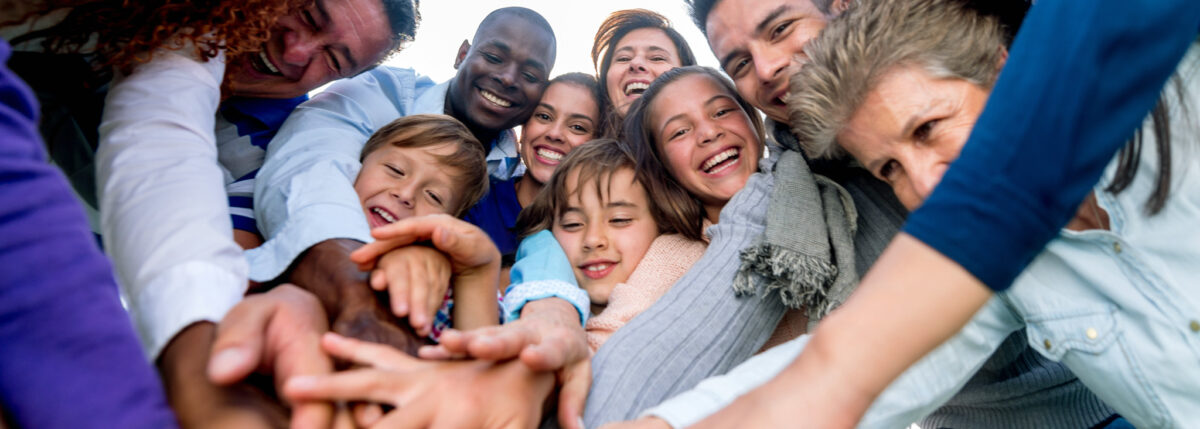Why are Black and Hispanic Youth with T1D Using Less Diabetes Technology?
Written by: Lala Jackson
8 minute read
April 28, 2021
Shivani Agarwal, MD, MPH, is the director of the Supporting Emerging Adults with Diabetes program and assistant professor of Medicine and Endocrinology at Albert Einstein College of Medicine-Montefiore Medical Center, located in the Bronx, New York City.
Over the past several years, Dr. Agarwal has authored or co-authored much of the data being published on racial-ethnic and socio-economic disparities in type 1 diabetes care, including the April 2021 study “I didn’t really have a choice”: Qualitative Analysis of Racial-Ethnic Disparities in Diabetes Technology Use Among Young Adults with Type 1 Diabetes, the December 2020 study on Racial-Ethnic Disparities in Diabetes Technology Use Among Young Adults with Type 1 Diabetes, the August 2020 study on Racial-Ethnic Inequity in Young Adults With Type 1 Diabetes, the September 2018 study on Association of Race and Ethnicity With Glycemic Control and Hemoglobin A1c Levels in Youth With Type 1 Diabetes, and the July 2018 study on Disparities in Care Delivery and Outcomes in Young Adults With Diabetes.
To learn more about Dr. Agarwal and her work, we caught up with her in a February 2021 phone call, summarized below:
You do so much meaningful work in diabetes care, particularly youth care, and collecting data on disparities within it. So I’d love to back up a bit and better understand how you got here. What’s your origin story? Why diabetes? Why this lane of care and research?
I have a family history of type 2 diabetes, so I was always interested in endocrinology because of that. I saw firsthand how important lifestyle is to health, and how life-altering a diabetes diagnosis is for the family. I was interested in being on the other side and helping patients and their families.
When I went to public health school in the middle of medical school, I learned a lot about how broken the system is. I learned that if we can address inequities and inefficiency in the system, we can fix patient care. My early work was in pediatric-to-adult transitions in type 1 diabetes. That was a very system-based problem. I wanted to help fix the system to improve patient access to care and in turn improve outcomes.
Today, I’m the director of the Supporting Emerging Adults with Diabetes (SEAD) program, a childhood-to-adult diabetes transition clinic. These young adults just need help. They’ve been through so much. When I was at the University of Pennsylvania, we had close to 500 patients, all 18-30 years old with type 1 diabetes (T1D). We were trying to provide cutting edge young adult care. Looking at our outcomes, we improved satisfaction with care and HBA1c overall, but there was a large disparity between Black and Hispanic young adults and our white young adults.
That was the first whiff personally of large inequities in care—we can provide the best, well-meaning care, but there’s still going to be disparities in outcomes. That led me to look to the data to try to figure out what was going on.
In 2013, there just wasn’t data. Not in type 1 diabetes, not in technology. So I secured an NIH grant to look into disparities and outcomes.
At SEAD, we ask our young adults to inform our research and we conduct studies that are hopefully actionable. As an example, we did this large analysis on 300 young adults across the country. We pre-specified enrollment targets on race-ethnicity to dive into the disparities conversation, and determine what social determinants of health (SDOH) are interfering, what contributes to these A1C disparities. We knew social determinants of health would be at the top of the list, but it needed to be published, we needed the data, it needed to be said.
What we found was that diabetes technology use really led to a significant portion of that A1C disparity across races. And it wasn’t economic—five out of six of the study sites had public insurance coverage for these technology systems—the insulin pumps and continuous glucose monitors (CGMs). Which meant there was something else going on.
How do you feel about the state of research around disparities?
Disparities are not new, we know this. But for change to happen in how we do healthcare, we need data. There was great research in the 80s and 90s, but I don’t think people were really listening or felt like they could do anything about it. Researchers and clinicians didn’t know how to bring these populations out of poverty, so they didn’t do anything at all.
Now that people are becoming more aware of disparities and social needs, they’re more primed to listen and do something about it, more primed to read these papers. It’s pushed us as researchers to find more nuanced ways to study these disparities. An example of how we’re going about this is geocoding analysis, which is based on the recognition that people are a product of their neighborhoods and their resources in those neighborhoods. That’s one real advancement that has come up—newer methodologies.
More important is that the funders are now listening. They’re keying into opportunities where, even if the studies aren’t focused on disparities, they’re asking for recruitment targets that are more inclusive, making sure study recruitment is from a large and wide group. They’re requiring that 30-40 percent of the recruitment population—the people involved in the studies—are minorities. The pieces to push the field are finally coming together. We as researchers need to be the ambassadors of the messages of our patients, find ways to break it down for clinicians and funders to get meaningful programs developed that will help people now.
Given all the work you do, what do you wish people understood about the state of diabetes care today?
Two things—for type 1 diabetes especially, there has to be general recognition that while traditionally, the majority of people with type 1 diabetes have been Caucasian, the ratio of people in minority groups with type 1 are significant and growing. If we don’t pay attention now, we’ll be in real trouble later.
Second, these disparities are not due to patient-level factors. They are mostly not due to anything the patient can control or eliminate. We have to recognize that we all live within systems. We live within communities, healthcare systems, and societies that do not necessarily allow certain groups to succeed. We must be cognizant that the inequities we find in general are due to the systems we live within.
Your research and work, in an unfortunately rare way, seems to seek to address the whole person, not just their diabetes. You mention that the youth you work with are often more likely to experience financial hardship, adverse childhood events, food insecurity, etc. Can you tell me a bit about your approach to working with the whole person, not just their diabetes?
I have to recognize two things. Number one, I may be their only healthcare provider. I can’t pass off addressing these social determinants of health needs, like housing, food scarcity, insurance access, to someone else. Even if they have a primary care provider, maybe they don’t see them often, so we as diabetes specialists need to take these important issues on.
Number two, there is no way we can talk about self management and insulin dosing without understanding whether vulnerable populations can even access insulin, if they’re able to eat more than once a day, if they have a safe place to live. There’s no way I can manage that patient and keep them safe. I let them know that, “Listen, yes you’re here for your diabetes. But diabetes affects all parts of your life, and all parts of your life affect your diabetes.”
It’s a patient first approach. Not just checking boxes, but finding the context within which the patient operates. It helps with our relationship. It helps with making attainable goals for care. Over time, it definitely improves A1C.
For example, yesterday I had a patient who had by chance mentioned that her copay of $25 for her Novolog was distressing for her. Just that little piece of information that she gave me allowed me to ask her about her other situations. It turns out she was living in a shelter, only eating one meal a day, and had missed almost a year of appointments because she didn’t have transportation to get there.
All of a sudden, I was able to call the social worker in—we were able to get her housing vouchers she was eligible for because of COVID-19, we were able to get her access to SNAP benefits. She called me later and said, “no one has ever done this for me.” She said that all of a sudden, she felt like she might be able to pay attention to her diabetes at some point soon.
A thing we hear sometimes from our community when we talk about issues faced by Black people or other people of color with diabetes is, “stop making this about race, diabetes is hard for everyone.” What are your thoughts on that statement?
I don’t think it’s wrong to say diabetes is hard for everyone, I just don’t think they’re mutually exclusive. Why can’t we acknowledge that diabetes is hard for everyone, but that there might be significant challenges added to some people’s experiences because of their skin color?
Diabetes supplies are expensive. Diabetes management is really hard. So imagine having to add not trusting your healthcare provider because you’re afraid they’re judging you for or making assumptions about you based on your skin color.
Acknowledgement and education about the different disparities is important. Young adults, regardless of race and ethnicity, have financial challenges. But race is an added layer. And we see, specifically as it relates to technology use, the data stands for itself.
Why are Black and Hispanic youth using less diabetes technology?
Data wise, we have a bit of a hint. We just launched some qualitative analyses—we interviewed 50 Black and Hispanic young adults in the Bronx about their experiences discussing diabetes technology with providers and their perception of diabetes technology in general.
What we found is that patients said they were never offered technology, or were told that they could not have the technology because their A1C was too high. There were also biases against technology because of mistrust in providers. But overall, we heard that providers weren’t initiating these conversations with Black and Hispanic youth patients at all. Implicit bias is real.
We did a follow-up study and interviewed 32 different healthcare providers across the country to understand their barriers to implementing technology in these Black and Hispanic young adult populations. We are going to present our findings at an oral presentation at the upcoming American Diabetes Association Scientific Sessions in June 2021, so stay tuned.
When it comes to diabetes care for Black, Hispanic, or low socioeconomic youth, what are the game changers?
Systematic screening for social determinants of health has made a huge impact. We’re uncovering things we weren’t aware of before. A lot of healthcare providers are afraid of screening because they don’t know what to do once they find issues, but there are way more resources available to help now, even more so in the past year.
For type 1 diabetes, it’s promoting technology use. Without technology, we see people toiling away with an A1C of 10 or above, but once we’re able to get them access to technology, their A1C drops and their diabetes distress lessens. And we have to understand context—both our own implicit bias, but also the exceedingly complex systems our patients live within.
This content was made possible in part with support from Medtronic Diabetes, an active partner of Beyond Type 1 at the time of publication. Medtronic Diabetes recognize that a major racial disparity exists in technology use and access in the diabetes community. Beyond Type 1 maintains full editorial control of content published on our site, and the views expressed in this interview represent those of Dr. Agarwal and Beyond Type 1 alone.
Learn more on Medtronic’s ASK campaign here.

Author
Lala Jackson
Lala is an author and communications strategist who has lived with type 1 diabetes since 1997. She worked across med-tech, business incubation, library tech and wellness before landing in the type 1 diabetes (T1D) non-profit space in 2016. A bit of a nomad, she grew up primarily bouncing between Hawaii and Washington state and graduated from the University of Miami. You can usually find her reading, preferably on a beach.
Related Resources

On December 7, 2023, Tandem Diabetes Care launched updated software and announced that its automated...
Read more

While there is still no exact cause of type 1 diabetes (T1D) or cure, new...
Read more

On July 20, 2023, the American Pharmacists Association (APhA) Foundation and The Leona M. and...
Read more

